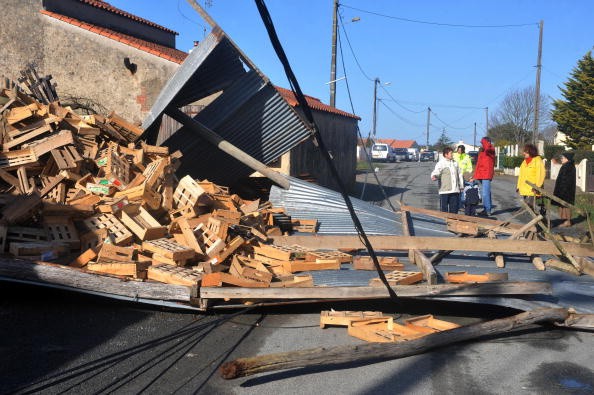Recent study shows that hurricanes and typhoons may become more common in mid-latitude areas in the 21st century, affecting major cities including New York, Boston, Beijing, and Tokyo.

Tropical Cyclones to Occur Over a Wider Range of Latitudes
According to the research published in the journal Nature Geoscience, hurricanes and typhoons might move north or south as the world heats due to human-caused greenhouse gas emissions.
This year's Hurricane Henri and 2020's subtropical storm Alpha, which was the first tropical cyclone to make landfall in Portugal, may be harbingers of future storms, according to Phys.org.
Yale physicist Joshua Studholme, the study's primary author and a contributing author of the United Nations' Intergovernmental Panel on Climate Change forecasts that tropical cyclones in the 21st century would affect a broader variety of latitudes than they have in the last 3 million years.
Coauthors of the work include Yale Oceanic and Atmospheric Sciences Professor Alexei Fedorov together with Sergey Gulev from the Shirshov Institute for Oceanology, Kerry Emanuel from MIT, and Kevin Hodges from the University of Reading.
How Global Warming Influences Tropical Cyclone
A rise in the number of tropical cyclones is often mentioned as a sign of climate change, however it is not known how sensitive they are to changes in the global average temperature. Co-author Emanuel utilized classical thermodynamics to predict that global warming will lead to more severe storms, a prediction that has been confirmed in the observational record.
Even yet, there are still many features of tropical cyclones and climate that require a physical basis. No one is sure, for example, whether global warming will increase or reduce the frequency of storms, or why the earth has around 90 of these occurrences each year.
Fedorov said there are considerable uncertainties about how tropical cyclones would evolve in the future. Even if the overall frequency of tropical cyclones does not increase, which is still being contested, numerous lines of evidence suggest that earth might witness more tropical storms at mid-latitudes.
Tropical cyclones will pose greater dangers when their average intensities rise owing to climate change, which is already predicted to happen.

Formation of Tropical Cyclones
Due to the shearing effect of the jet streams - the west-to-east winds that surround the Earth - tropical cyclone formation often occurs at low latitudes with easy access to warm waters of tropical seas. Tropical cyclones arise when a mass of thunderstorms gathers and spins up due to the Earth's rotation. There are a variety of other factors that might contribute to the development of a storm.
Researchers predict that as the climate warms, the gap in temperature between the equator and the poles will narrow. This may lead to a weakening or even a break in the jet stream, allowing tropical cyclones to develop and strengthen in the mid-latitudes during the summer months.
They evaluated computer models of warm climates from Earth's ancient past, current satellite measurements, and a range of weather and global-scale climate forecasts in addition to the underlying physics regulating atmospheric convection and global-scale winds for the research.
For instance, they found that tropical cyclones formed and intensified at higher latitudes during the Eocene (56-34 million years ago) and Pliocene (5.3-2.6 million years ago) periods when temperatures were warmer.
Using linkages between smaller-scale storm physics that can't be captured by existing climate models and more accurately reproduced dynamics of Earth's jet streams, including the north-south air circulation known as Hadley cells, the new research draws its results.
For more news, updates about hurricanes and similar topics don't forget to follow Nature World News!
© 2025 NatureWorldNews.com All rights reserved. Do not reproduce without permission.





